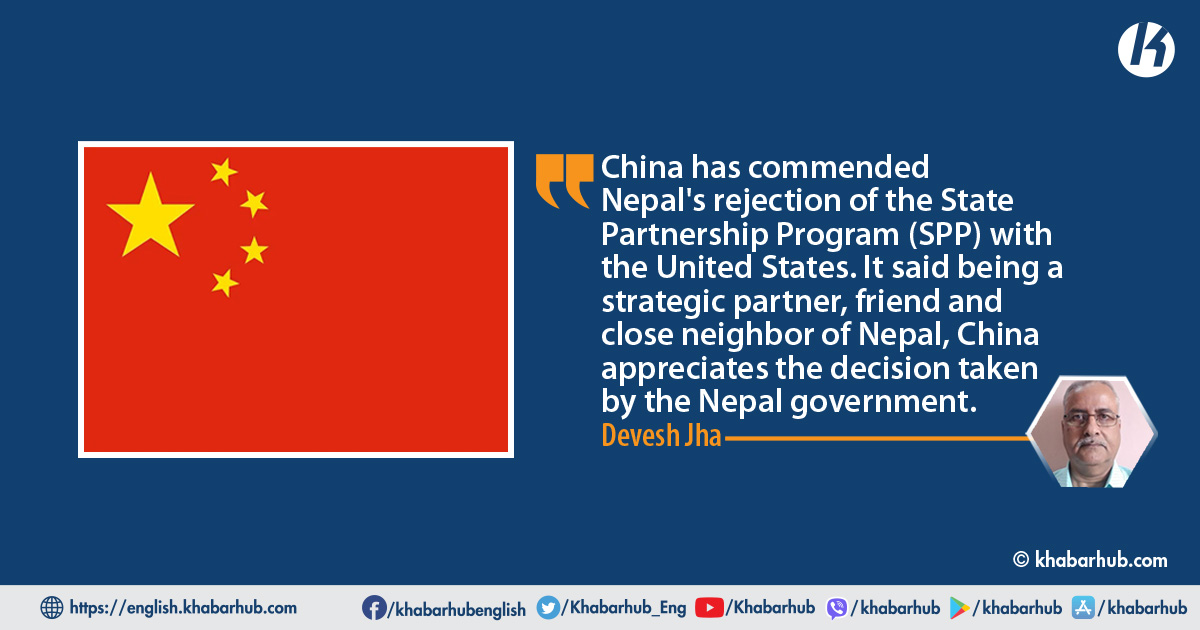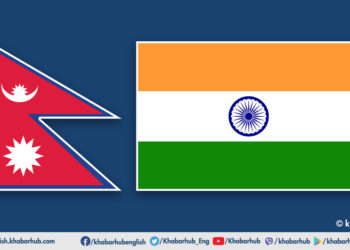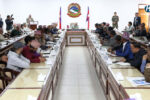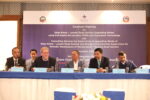US House Speaker Nancy Pelosi’s visit to Taiwan gathered a fuss late. Speaker Pelosi, who was on a tour of Asia, arrived in Taiwan for two days on August 2.
Foreign Minister Wang Yi said in a statement from China, “Those who play with fire will not have a happy ending, and those who insult China will be punished.” China accused the United States of America of violating China’s sovereignty under the guise of ‘so-called democracy’.
Taiwan is a self-governing island, but China claims it and believes it will be annexed in the future.
On the other hand, the Chinese ambassador in Kathmandu, Hou Yanqi, has also commented on the US Speaker’s visit to Taiwan.
Accusing the US of a serious violation of the ‘One China Policy’, ambassador Yanqi said, ‘US House of Representatives Speaker Pelosi’s visit to China’s Taiwan region is a serious violation of the One China Principle. This undermines peace and stability in the Taiwan region. China firmly opposes and strongly condemns it.”
Along with this, Ambassador Yanqi added that ‘China highly appreciates Nepal’s long-standing commitment to the One China principle and its firm opposition to Taiwan independence’.
Meanwhile, the relevant undertakings should be handed over to China for a long time. Sri Lanka, which received Chinese investment, was forced to lease the Hambantota port for 99 years due to its inability to pay its debt. Similarly, Pakistan has leased Gwadar port to China for 40 years as it could not pay its debt.
She tried to draw Nepal into the Taiwan issue as well. In other words, it seems that Nepal, which has been supporting the One China policy, is trying to reaffirm it.
Nepal’s policy, which has been adopted by China in the past, has become aggressive for a few years and it seems that it is about to present itself as a protector. In the last parliamentary election, China’s special attention was focused on the American project in Nepal, and encouraging main left-wing parties for unity or integration.
China came openly against the US grant project Millennium Challenge Corporation (MCC) when differences between the political parties continued regarding the approval of this US aid project. China, which commented twice within a week, wanted to obstruct the implementation of the project anyway.
Regarding the program, Hua Chunying, spokesperson of the Chinese Ministry of Foreign Affairs, satirized the American project by saying that the MCC grant is a Pandora’s box and commented that it is difficult for Nepal to digest a gift that has been given fixing a certain time for approval.
A week before this, another spokesman of the Chinese Foreign Ministry, Wang Wenbin, said at a press conference held in Beijing that China would oppose the United States’ “forced diplomacy” in Nepal in the name of MCC.
In fact, China accused the US of ‘coercive diplomacy’ and indicated the aggressive style shown in its relations with Nepal. Ironically, China came at a role it accused the US of practicing, a Wolf Warrior diplomacy.
Recently, China has commented that Nepal’s rejection of the State Partnership Program (SPP) with the United States is commendable. Last June, Chinese Foreign Ministry spokesperson Wang Wenbin responded at a regular press conference on the decision to reject this program by the Nepalese government.
He tried to indirectly present China as a protector by saying that China continues to support Nepal’s sovereignty, independence, geographical integrity, and independent and non-aligned foreign policy commitment.
Nepal’s relationship with its northern neighbor China seems to be multifaceted. According to the agreement made by the then King Mahendra Bir Bikram Shah during border management (which is also known as the ‘Waterfall’ Agreement), the entire Mount Everest was accepted to be within Nepal.
The confirmation of which is the interviews given during the high-level visit from China. But now the northern part of Everest is called ‘Chomolongma’ under China.
Similarly, it does not want to resolve the controversial border encroachment in the Himalayan district of Jumla (about which authentic documents have been repeatedly presented in the Parliament by the local lawmakers).
The embargo issue is like a much-discussed and outraged serial in Nepal. However, many people do not even know about the undeclared blockade by China.
So far, hardly 20 containers of goods are sent to Nepal through the northern border. Some traders who bring goods from Tatopani and Kerung crossings have reached a state of bankruptcy. But the most important and sensitive issue is the non-transparency of the agreements made by China with Nepal.
Official documents related to the construction of projects including the international airport operated by the Chinese state-controlled company in Nepal are not made public.
It seems like China’s undeclared national policy. The latest example of this is Belt and Road Initiative (BRI).
Despite the opposition to the American project MCC, all the documents related to it were made public, but no Nepali side has been able to provide reliable details about the BRI.
There is no formal agreement between Nepal and China related to BRI, only a Memorandum of Understanding was exchanged in 2017. But on the occasion of the Chinese President, Foreign Minister or other high-level visits to Nepal, BRI-related issues are raised quite often.
Is China really more concerned about national development than Nepal, or is the real motive of the Chinese projects to address China’s strategic needs rather than Nepal’s interest?
According to a statistic, China’s share of Nepal’s foreign debt has been continuously increasing over the last five years.
The statistics made public by various research organizations show that the debt which was 1.93 percent in the financial year 2016/17 increased to 2.66 percent in 2017/18 and 3.10 percent in 2018/19, it reached 3.24 percent in 2019 and now it has reached 3.39 percent in 2020/21. Loans received under BRI are yet to be added to this.
Nepal presented to China 35 projects worth about 10 billion dollars, including energy, infrastructure, north-south corridor, and integrated check post upgrading, which are considered suitable for operation under BRI.
Out of which nine projects, including Rasuwagadhi-Kathmandu Road upgrade, Kathmandu Mountain Road Construction, Khokna-Bidur Road, 400 KVA Galchi-Rasuwagadhi-Kerung Transmission Line, North-South Railway, 762 MW Tamor Hydroelectric Project, 426 MW Fukot Karnali Hydroelectric Project, Madan Bhandari Technical Institute, have been put on the priority list.
Until the BRI projects are completed, Chinese exports will continue to grow and recipient countries will continue to be consumers of its surplus industrial output.
If these projects are implemented, it is certain that the debt burden with China will increase qualitatively.
China’s share is only 10 percent of Sri Lanka’s dire economic situation. But why did they refer to the Chinese debt as a debt-trap even though it is such a low percentage? The question is natural.
To understand this, one must know the procedural differences between Chinese loans and other international loans. International loan interest rates range from 1.5 to 2.5 percent, while Chinese loans are not available at less than 4 percent.
Similarly, the repayment period of international loans is 25/30 years, while Chinese loans have to be repaid within 10/15 years.
International loans are managed through various means including grants in case of inability to repay on time.
Meanwhile, the relevant undertakings should be handed over to China for a long time. Sri Lanka, which received Chinese investment, was forced to lease the Hambantota port for 99 years due to its inability to pay its debt. Similarly, Pakistan has leased Gwadar port to China for 40 years as it could not pay its debt.
Like the much-discussed and criticized internal situation of China, whether the BRI is just welfare or a trap sounds mysterious in the beginning.
China’s Shanghai-based Fudan University’s Green Finance and Development has published a report that a total of 755 billion dollars was spent on BRI projects and more than 65 percent of them were spent on energy and transportation.
When the BRI project was proposed by Chinese President Xi Jinping in 2013, it was envisioned to build a friendly and peaceful world through it.
However, the underlying facts were completely different. BRI’s projects like energy and transport infrastructure and real estate require building materials like steel and cement, which are heavily supplied from China.
100 million tons of steel and 210 million tons of cement are being produced monthly from China, which has become a bad loan for the banks due to the negative impact on the overall economy due to its inability to consume domestically.
Therefore, BRI has been put forward by China to keep the economy running by consuming its own products.
There is also an attempt to make a conducive atmosphere to work as per Chinese plans through the left-wing leaders. But understanding the sensitive geographical location and strategic importance, Nepal should always be alert about its financial issues.
But this creates a huge imbalance between the supplier China and the recipient countries, leading to a large volume of trade in favor of China.
Until the BRI projects are completed, Chinese exports will continue to grow and recipient countries will continue to be consumers of its surplus industrial output.
One should be alert on financial issues
Rather than being ‘financiers’, the Chinese have positioned themselves as ‘builders’, lending their capacity to build projects under the BRI.
China dominates international project contracts. 75 of the world’s top 250 international contracting firms are from China.
And this is continuously increasing at the present time. Most of the BRI projects are invested by large Chinese state-owned banks, and if any conflicting situation arises, it should be resolved within Chinese territory.
In these projects, rather than hiring the locals, the Chinese projects employ a large number of Chinese workers. In other words, all the materials, labor, and investment used in the construction work provided by making loans are from China.
In general, BRI, which was started with the slogan of world welfare, is actually an ambitious project brought to manage China’s economy in view of excessive production but low domestic consumption.
It is operated in accordance with the roadmap prepared for purely commercial purposes. Therefore, it seems that no matter how many requests are made in the form of grant assistance, they are never heard.
Nepal needs to bring its infrastructural development to the contemporary global level but not by building a habitation like Sri Lanka. For the past few years, it seems that China is trying to pull Nepal under its protection in the name of non-aligned foreign policy and strategic partners.
There is also an attempt to make a conducive atmosphere to work as per Chinese plans through the left-wing leaders. But understanding the sensitive geographical location and strategic importance, Nepal should always be alert about its financial issues.









Comment